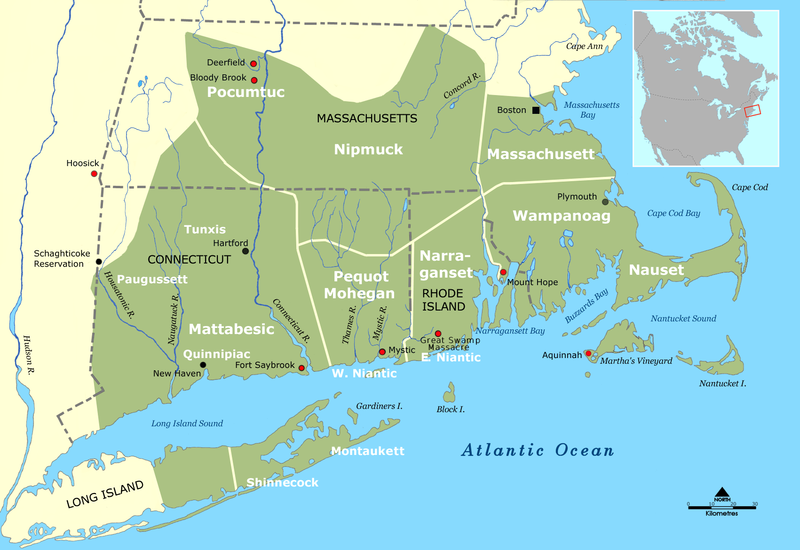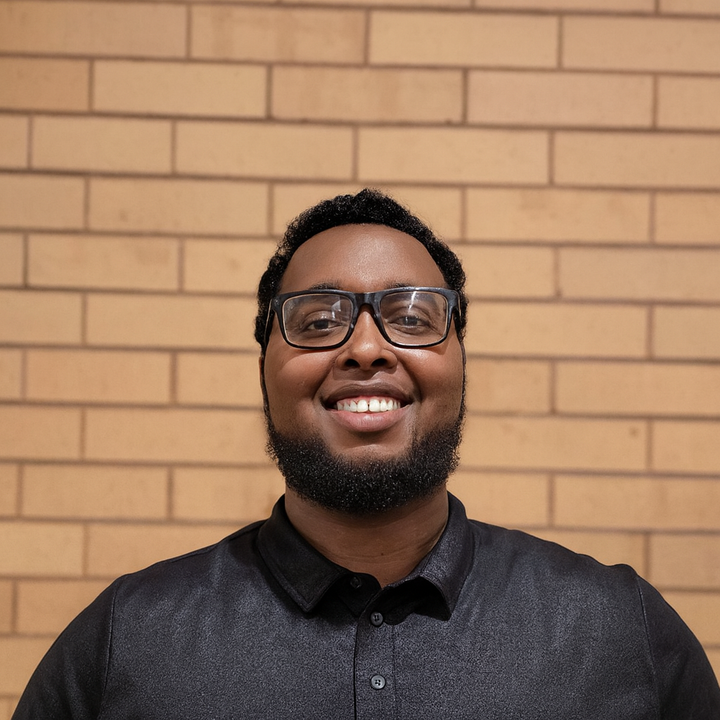Tracing Indigenous Lives: Through, Around and at Amherst College

The land on which Amherst College sits is Nonotuck land, with the Nipmuc and the Wampanoag to the east, the Mohegan and Pequot to the south, the Mohican to the west and the Abenaki to the north. Trigger warning: Some of the material in this spread may be disturbing to readers, but The Student believes that it is important to confront and hold the institution accountable for its history.
The People of Nonotuck The Nonotuck are an indigenous group, one of the many Algonkian peoples, historically centered around present-day Northampton with territory that extends toward Hadley and Amherst. They largely lived in villages supported by strong extended families, and frequently intermixed with many Native Americans from other nearby locales, including the Pocumtuc — which the Nonotuck are often broadly grouped with — the Abenaki, the Nipmuc, the Mahicans and the Pequot. Having access to the Connecticut and Mill Rivers and the abundant vegetation afforded by the associated watershed, the Nonotuck people thrived, making noted advances in agriculture and actively participating in a wide network of intertribal relationships, among other things.
When English, Dutch and French settlers arrived in the American northeast in the early 17th century, the Nonotuck were thrown into disarray, like many other indigenous groups in the area. Even before European colonists had reached the Connecticut River Valley, many of their trade goods and diseases — including devastating smallpox outbreaks — had already made their way through. This, combined with the large number of English who by then claimed Nonotuck as their territory, as well as conflicts between indigenous groups spurred by violent European expansionism, quickly whittled away at the Nonotuck population. Many of them were driven to move north and join the Abenaki. Nowadays, few Nonotuck remain in and around Northampton, although many Algonkian peoples in the area have Nonotuck ancestry.
A Legacy Built on Genocide Lord Jeffery Amherst was the commander of the British army in North America, where he led the conquest of Canada from France. During Pontiac’s War, when a confederation of Native American tribes dissatisfied with British policy — most notably a decree by Amherst to end the tradition of gift-giving when visiting indigenous groups — rebelled with the intention of driving British settlers out of the area, Amherst infamously called for the extermination of indigenous peoples. He advocated for and eventually oversaw the conduct of biological warfare against Native Americans in Siege of Fort Pitt, using blankets contaminated with smallpox as a way to ravage the native population. In a letter in 1763, he wrote, “You will Do well to try to Innoculate the Indians by means of Blankets, as well as to try Every other method that can serve to Extirpate this Execrable Race. I should be very glad your Scheme for Hunting them Down by Dogs could take Effect…”
Amherst College is named after the town of Amherst, which in turn is named after Lord Jeffery Amherst. Lord Jeff, as he is commonly known, was the college’s informal mascot until 2016, when the board of trustees voted to remove the usage of Lord Jeff in all official communications, messaging or symbolism.
 Composed by James Shelley Hamilton of the class of 1906, the Lord Geoffrey Amherst song is one of several in an anthology titled “Amherst College Songs” published in 1906. Hamilton’s inspiration for the song derived from the college’s lack of one — Amherst did not have its own version of Harvard’s cheery “Here’s to Johnny Harvard” song, Hamilton lamented in a letter written in 1934. Amid Hamilton’s ignorant pursuit for school spirit, an account of Lord Jeffery Amherst’s participation in the fight between “Frenchmen and the Indians” — and the exaltation of his “loyalty, bravery and fame” — saturates the throughout the song.
Composed by James Shelley Hamilton of the class of 1906, the Lord Geoffrey Amherst song is one of several in an anthology titled “Amherst College Songs” published in 1906. Hamilton’s inspiration for the song derived from the college’s lack of one — Amherst did not have its own version of Harvard’s cheery “Here’s to Johnny Harvard” song, Hamilton lamented in a letter written in 1934. Amid Hamilton’s ignorant pursuit for school spirit, an account of Lord Jeffery Amherst’s participation in the fight between “Frenchmen and the Indians” — and the exaltation of his “loyalty, bravery and fame” — saturates the throughout the song.

 Up until the 1970s, when Valentine Dining Hall underwent an overhaul in renovations, students dined using china plates, teacups and other utensils depicting Lord Jeffery Amherst forcefully chasing Native Americans. The china first came into use right before the turn of the 20th century when President Stanley King and his wife commissioned the plates to be designed in their home. “Our china made a conversation piece, and we knew that the students would frequently have their dates as guests for lunch and dinner,” Stanley wrote in his book “The Consecrated Eminence: The Story of the Campus and Buildings of Amherst College” in 1952. Top image: A student eats in Valentine Dining Hall using china depicting Lord Jeffery Amherst, April 1972. Bottom image: China used in Valentine Dining Hall, preserved by the Amherst College Archives and Special Collections.
Up until the 1970s, when Valentine Dining Hall underwent an overhaul in renovations, students dined using china plates, teacups and other utensils depicting Lord Jeffery Amherst forcefully chasing Native Americans. The china first came into use right before the turn of the 20th century when President Stanley King and his wife commissioned the plates to be designed in their home. “Our china made a conversation piece, and we knew that the students would frequently have their dates as guests for lunch and dinner,” Stanley wrote in his book “The Consecrated Eminence: The Story of the Campus and Buildings of Amherst College” in 1952. Top image: A student eats in Valentine Dining Hall using china depicting Lord Jeffery Amherst, April 1972. Bottom image: China used in Valentine Dining Hall, preserved by the Amherst College Archives and Special Collections.
Cultivating Community on Campus Over the course of the past few years, the college has seen an increase in Native students on campus. With strength in numbers, the Indigenous and Native Citizens Assocation (INCA) has built a community for themselves in at-times hostile spaces.
 Photos courtesy of INCA.
Photos courtesy of INCA.
When compared to the grueling histories tied to the college’s treatment of indigenous people, the progress made in the last few decades has proved substantial. The college began offering the Early Overnight for Native Students (EONS) program in 2014, during which prospective students participate in an additional day of regular Diversity Open House (DIVOH) programming targeted toward indigenous students. This past month, the college recognized Indigenous People’s Day for the first time in its history as cities, schools and other institutions across the country stopped recognizing Columbus Day. The Indigenous and Native Citizens Association (INCA) has also observed an expansion in membership and regular member attendance over the past few years, according to INCA Co-President Sarah Montoya ’21. The organization also recently acquired a space in Ford Hall for indigenous students.
“Thinking about how far it has come since I’ve started here, there were about three students involved with INCA, and maybe a couple of more outside of INCA, and now it’s really grown,” Montoya said.
More directed attention toward admitting native students has contributed to their increased presence on campus. In addition to EONS, the college partners with College Horizons, an organization that aims to prepare Native students for college. Montoya also highlighted that the hiring of Mandy Hart, associate dean of admissions and coordinator of diversity outreach, as an advancement for Native students.
Allies are found at multiple levels of administration, Montoya added. Chief Diversity and Inclusion Officer Norm Jones, Associate Dean of Diversity and Inclusion Angie Tissi-Gassoway and Chief Student Affairs Officer Karu Kozuma were among those Montoya noted as foundational for administrative shifts. Nicole Vandal ‘21, co-president of INCA, also noted that Head of Archives and Special Collections Mike Kelly has helped expand the archive to include books by native authors.
…But Still More to Do Rachel Chaffin ’20:The fact that the fall has Columbus Day and Thanksgiving … it can be discouraging and relentless for the Native experience in thinking about how much erasure is celebrated in the fall semester. It would be really awesome if the college would actually and permanently recognize Indigenous People’s Day.
Nicole Vandal ’21, Co-President of INCA: It’s sometimes difficult to be in classses where professors don’t realize that there are Native students on campus. Sometimes sensitive things can be said with the erasure of indigenous people. For example, you can’t talk about Yosemite National Park without mentioning that indigenous people had to be kicked off their land for it to be here. It’s hard to be in classes if you’re not with other Native students.
Trent Colbert ’20: Before coming to Amherst, I had never felt like I was part of a bigger community of Native students, and I have really enjoyed the community that I have found here. However, for much of my time here, I have often felt that our little community has largely existed on the outskirts of our broader Amherst community, since we never had a space to call our own.
Alexis Scalese ’22, Vice President of INCA: I feel really isolated on this campus. I’m always having to explain things to everyone all the time, and no matter how much people act like they understand, they really don’t. There are a lot of assumptions on this campus that Native students do not exist or are present … We deserve support in expressing ourselves and having access to the same things that other students have access to.
Q&A With Kiara M. Vigil, Professor of American Studies Q: When were the first Native American students enrolled into higher education? A: [We are unsure of when the first Native American students enrolled in higher education.] Widespread admission and enrollment of Native American students did not begin until the 1960s. Of course, they went to college before that … but there wasn’t a critical mass that could advocate for curriculum changes, student support, or anything like that until the 1960s. That’s fairly typical of other marginalized groups on campus.
Q: What can Amherst do to better support Native students? A: There has been an incredible shift from Amherst since 2012. The admissions department began to ask, “How do we recruit Native students? How do we support them?” Our advice was “Well, you have to consider the environment. To what degree will they feel welcome and supported?” Especially first-gen students … One of the most important things we can do now is support INCA [Indigenous and Native Citizens Association], the Native group on campus.
Q: Lord Jeff was the college’s unoffical mascot for decades. What was the effect of switching to the mammoth? A: The switch to the mammoth as the mascot, and other things like that, has meaning. The reason people battle about these things is because they have a value and they represent the cultural understanding. They celebrate certain understandings of things … It’s not a small thing that we shifted to the mammoth.
Editor’s note: The Student would like to thank Professor of American Studies and English Lisa Brooks for her help fact-checking the contents of this page.





Comments ()